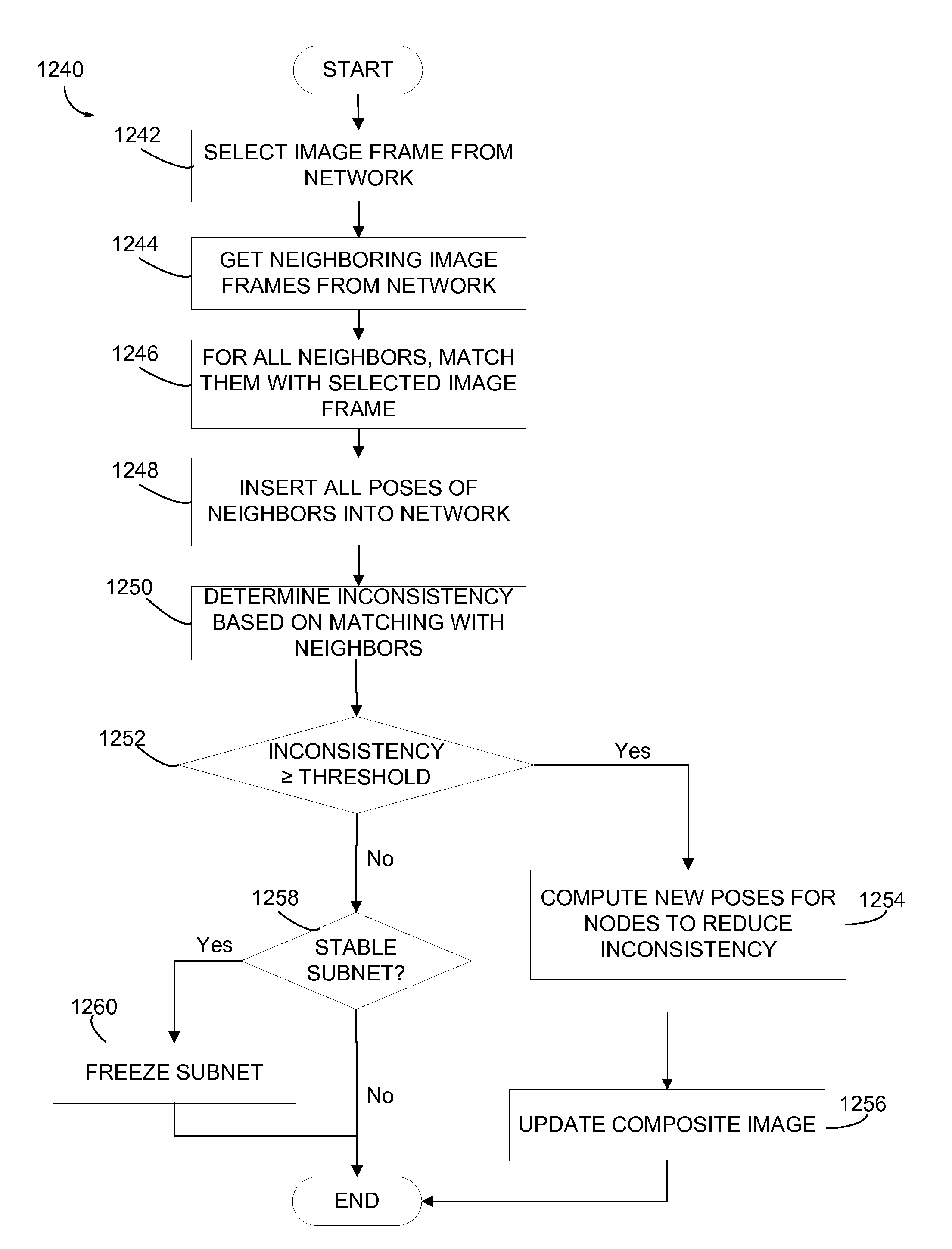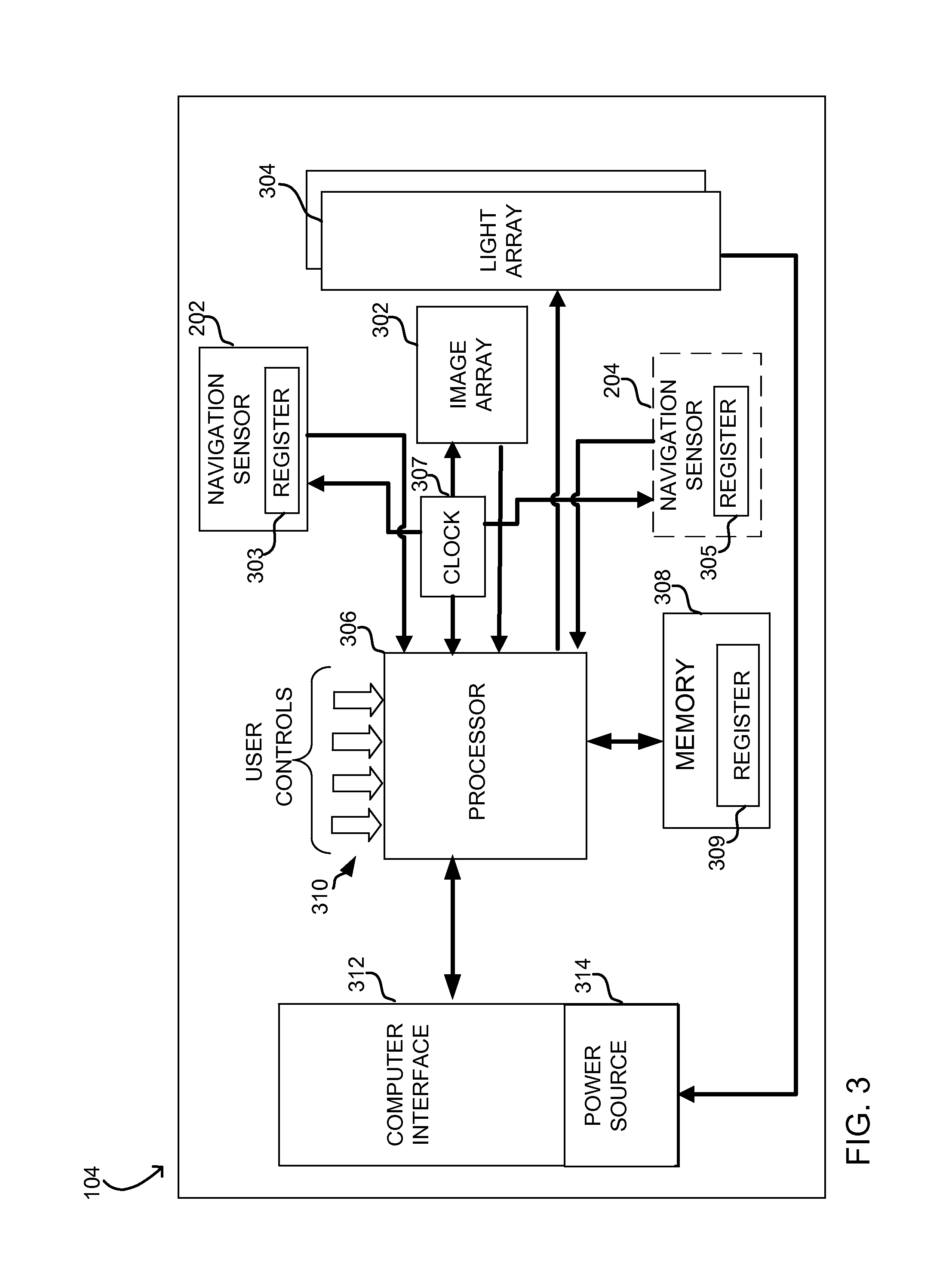Image processing for handheld scanner
a handheld scanner and image processing technology, applied in the field of handheld computer related devices, can solve the problems of cumbersome inconvenient use of handheld scanners, and inability to accurately assemble successive outputs of image arrays into images, so as to reduce the metric of inconsistency
- Summary
- Abstract
- Description
- Claims
- Application Information
AI Technical Summary
Benefits of technology
Problems solved by technology
Method used
Image
Examples
Embodiment Construction
[0041]The inventors have recognized and appreciated that a handheld scanner can be easy to use and produce high quality images, even of relatively large objects, by applying an improved image stitching process. Known handheld scanners suffer from various shortcomings. Some scanners rely on constraining motion of the scanner into a predefined path as an object is scanned. However, such scanners have been found to be difficult to use or to produce poor quality images when the scanner is not moved along the predetermined path. Other scanners rely on navigation sensors on the handheld scanner to determine the position of successive image frames, even if the scanner is not moved along a predetermined path. However, navigation sensors have been found to be not accurate enough to provide good quality images. Yet other scanners have relied on image processing to position within a composite image portions (e.g., strips) of images captured by the handheld scanner. However, these techniques ar...
PUM
 Login to View More
Login to View More Abstract
Description
Claims
Application Information
 Login to View More
Login to View More - R&D
- Intellectual Property
- Life Sciences
- Materials
- Tech Scout
- Unparalleled Data Quality
- Higher Quality Content
- 60% Fewer Hallucinations
Browse by: Latest US Patents, China's latest patents, Technical Efficacy Thesaurus, Application Domain, Technology Topic, Popular Technical Reports.
© 2025 PatSnap. All rights reserved.Legal|Privacy policy|Modern Slavery Act Transparency Statement|Sitemap|About US| Contact US: help@patsnap.com



